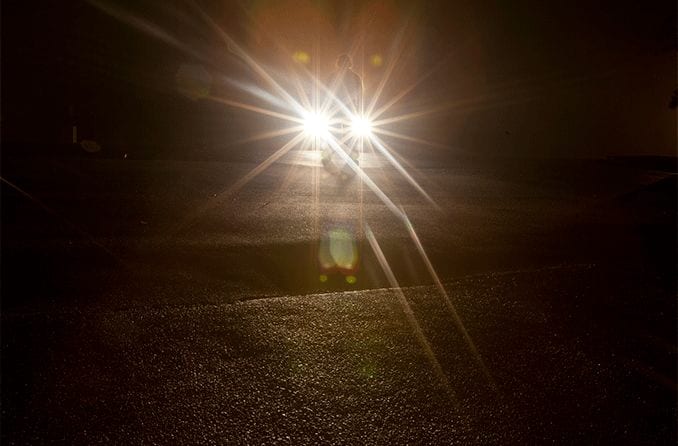Phosphenes are visual phenomena that give the impression of seeing light without an actual light source. The light may appear as dots, squiggles, swirls or flashes with bright colors, which is why many refer to the experience as “seeing stars.”
People usually undergo phosphenes as a result of eye trauma, compression or inflammation of the optic nerve or friction against the retina. While phosphenes themselves are not considered dangerous, their persistence may indicate a more serious underlying issue that requires medical attention.
What are phosphenes?
Phosphenes are flashes of colorful light that are produced from inside the eye rather than from an outside light source. Some people report that phosphenes look like rapidly moving stars, or shapes of color that wander slowly across your vision.
Undergoing phosphenes is called photopsia. It may occur very quickly and resolve after a few moments, or could be a recurring feature in your vision. One or both eyes may be affected.
A common practice that usually triggers phosphenes is eye rubbing. This action stimulates photoreceptors inside the retina and causes the light and colors to appear. Many times, the phosphenes will continue to visibly float across the visual field a few moments after pressure on the eyes is released.
While the response is a pretty cool phenomenon, rubbing your eyes can cause harm to the skin and muscles around the eye, as well as the eye itself.
What causes you to see stars?
Seeing stars or phosphenes occurs when a source (other than outside light) stimulates the retina and/or optic nerve. The “source” that sparks retinal stimulation can include:
- Increased eye pressure – Can be the result of eye rubbing, sneezing, blowing your nose, heavy coughing, laughing or any kind of straining, as well as an injury to the head or eye.
- Low blood pressure – Seen most often when someone stands up too quickly (dizziness may also occur).
- Compression or inflammation of the optic nerve or retina – Can stimulate the retina and/or optic nerve falsely, creating phosphenes.
Phosphenes are often a symptom of an underlying condition, such as:
- Posterior vitreous detachment – A condition that occurs when the vitreous pulls away from the retina. Caused by the age-related thinning of collagen within the eyeball. This is a natural, non-threatening circumstance.
- Diabetic retinopathy – Damage to the retina caused by uncontrolled blood sugar levels. Diabetic retinopathy can cause vision loss if untreated.
- Age-related macular degeneration (AMD) – Deterioration of the central part of the retina, called the macula. Central vision can be lost to AMD.
- Retinal detachment – A condition in which part of the retina separates from the back of the eye. Unlike vitreous detachment, retinal detachment is a serious medical emergency.
- Optic neuritis – Inflammation of the optic nerve that can damage the protective sheath (myelin) surrounding the nerve. Often seen in people with multiple sclerosis (MS).
- Ocular migraine – Blind spots, floaters, flashes, or wavy and flickering colored lights in one’s vision. Ocular migraines are caused by reduced blood flow or blood vessel abnormalities in the retina or behind the eye.
- Vertebrobasilar insufficiency – A medical situation characterized by poor blood flow to the back of the brain. In turn, the part of the brain that controls vision and coordination is lacking oxygen.
- Charles Bonnet Syndrome (CBS) – A phenomenon affecting people who have partially or completely lost their sight, in which they still “see” things that aren’t there. CBS is caused by the brain’s adaptation to losing visual stimulus.
SEE RELATED: Eye floaters: Causes and treatment
Symptoms
The most common symptom when experiencing phosphenes is seeing small specks, squiggles or stars that move across your vision. While these types of eye floaters may feel as if something is on your eye or very close to it, the source is actually from inside the eye.
Other common symptoms of photopsia or seeing phosphenes include:
- Floating shapes or dots in the eyes that move along with it.
- Shimmering, twinkling or glittering lights.
- Snow, static or fuzz in the visual field.
- Zigzag lights that seem to flicker or strobe.
- Bright, vibrant colors.
Treatment
Seeing phosphenes is actually not a condition itself, but a symptom of an underlying problem (or an external factor, such as pressure from eye-rubbing). Treatment will be determined based on the preexisting condition.
The persistent appearance of phosphenes may indicate the change or worsening of a preexisting condition, or the development of a new condition, and should be evaluated by an eye care professional.
If damage in the brain, optic nerve or other parts of the eye is severe enough, phosphenes may be irreversible.
When to see a doctor
Experiencing phosphenes every once in a while after a strenuous task, as mentioned above, is normal and no cause for alarm. However, if the phosphenes continue and are accompanied by any of the following symptoms, you should seek medical attention:
- Weakness.
- Dizziness.
- Headache.
- Double vision.
- Nausea or vomiting.
- Low blood pressure.
- Numbness.
- Temporary loss of consciousness.
Regular eye exams will allow your eye doctor to detect any underlying issues that may be causing your phosphenes and to prescribe appropriate treatment.
READ MORE: Eye floaters after eye surgery










